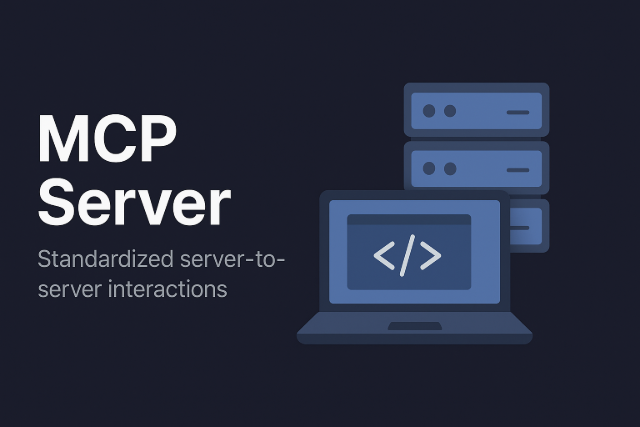Why MCP Server?
As we move deeper into the agentic world, server-to-server interactions are no longer confined to the browser. AI agents are running constantly—inside dedicated apps, IDEs, consoles, and even data centers—working autonomously and requiring consistent, reliable ways to interact with the resources around them.
In this new landscape, your applications need to be detectable and accessible so that any large language model (LLM) can quickly gather context, access resources, and use the right tools to perform the tasks at hand. No ambiguity. No confusion.
That’s where MCP Server comes in.
What is MCP Server?
MCP Server is a protocol—similar to how REST APIs standardize HTTP requests—that provides a structured way to build and deploy server-to-server interactions for AI agents.
By using MCP, developers can ensure their apps “speak the same language” when agents are involved. This means faster integration, more predictable performance, and fewer edge cases where agents misunderstand what an app can or cannot do.
Why Standardization Matters
Standardization accelerates development. If MCP becomes widely adopted, future LLMs can be trained and fine-tuned with the protocol itself built into their foundation. This would dramatically improve app discovery and usability for both developers and AI systems.
Think about it like this: REST APIs transformed how we build web apps by creating a shared contract between systems. MCP has the potential to do the same for agent-driven ecosystems.
Getting Started: Build Your Own MCP Server
If you’re curious about bringing MCP into your applications, the best way to start is by building an MCP server yourself. I’ve put together tutorials to help you get hands-on experience:
- Python MCP Server Tutorial: Tennis MCP Server
- TypeScript MCP Server Tutorial: MCP Server TypeScript Tutorial
These guides walk you through building your own server from scratch in both ecosystems. Whether you prefer Python’s simplicity or TypeScript’s type safety, you’ll get a clear understanding of how MCP works and how you can apply it to your own projects.
Next Steps
This is just the beginning of what’s possible with MCP. As the agentic world continues to expand, protocols like this will become the backbone of how applications and AI collaborate at scale.
If you’re interested in:
- Deep dives into MCP use cases,
- Tutorials on integrating MCP into production apps,
- Or staying updated on the agentic ecosystem,
follow along—I’ll be sharing more guides and insights right here.
